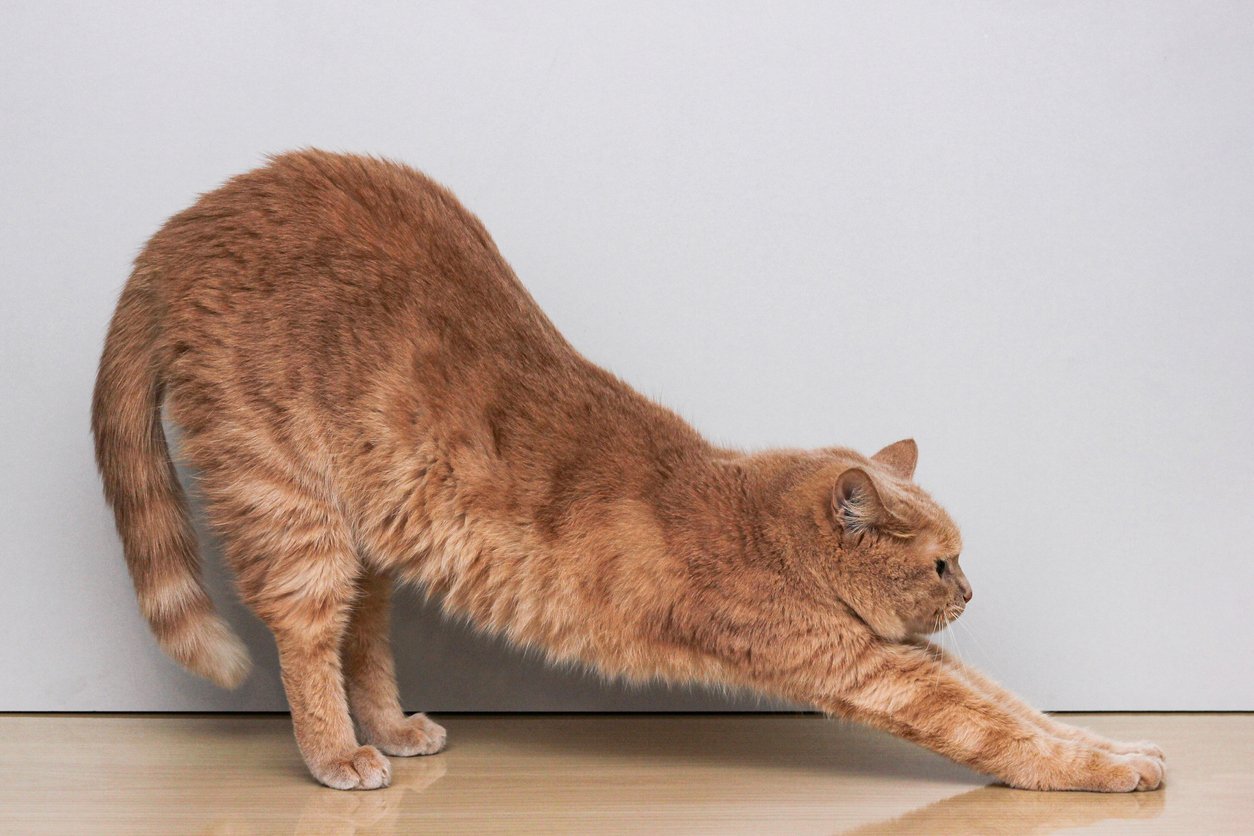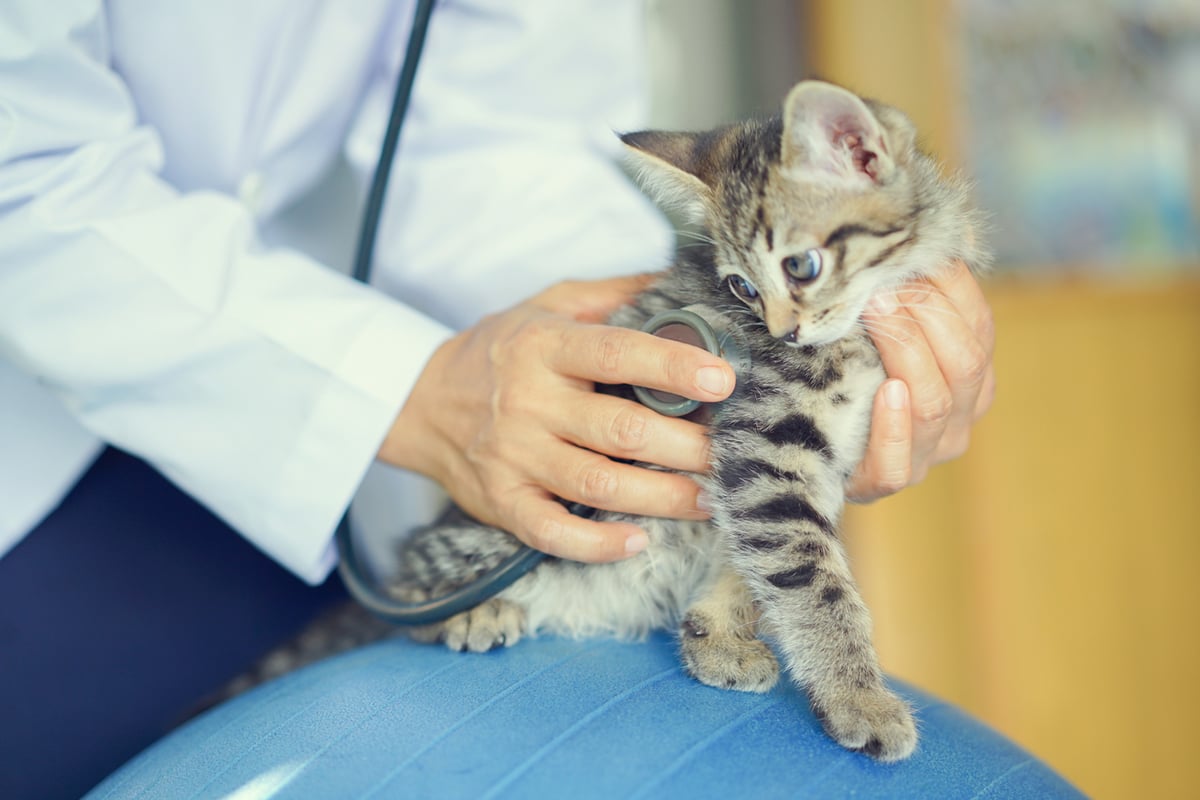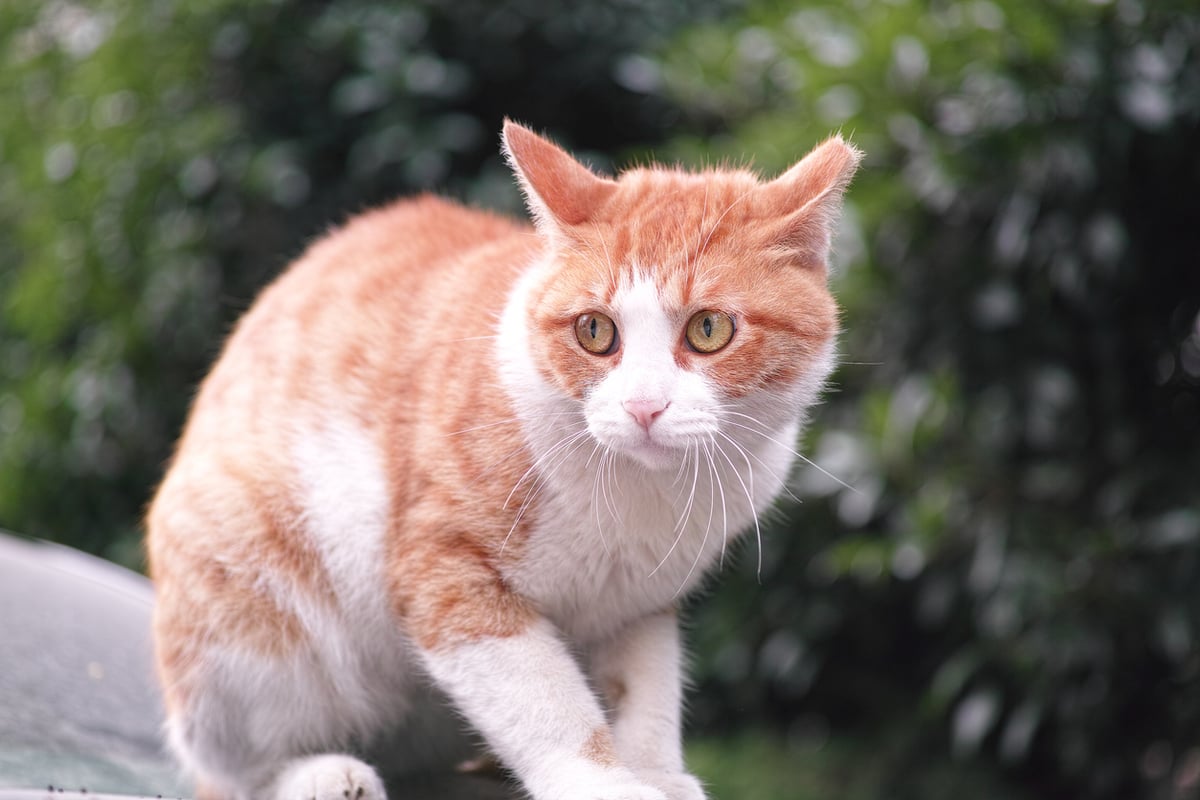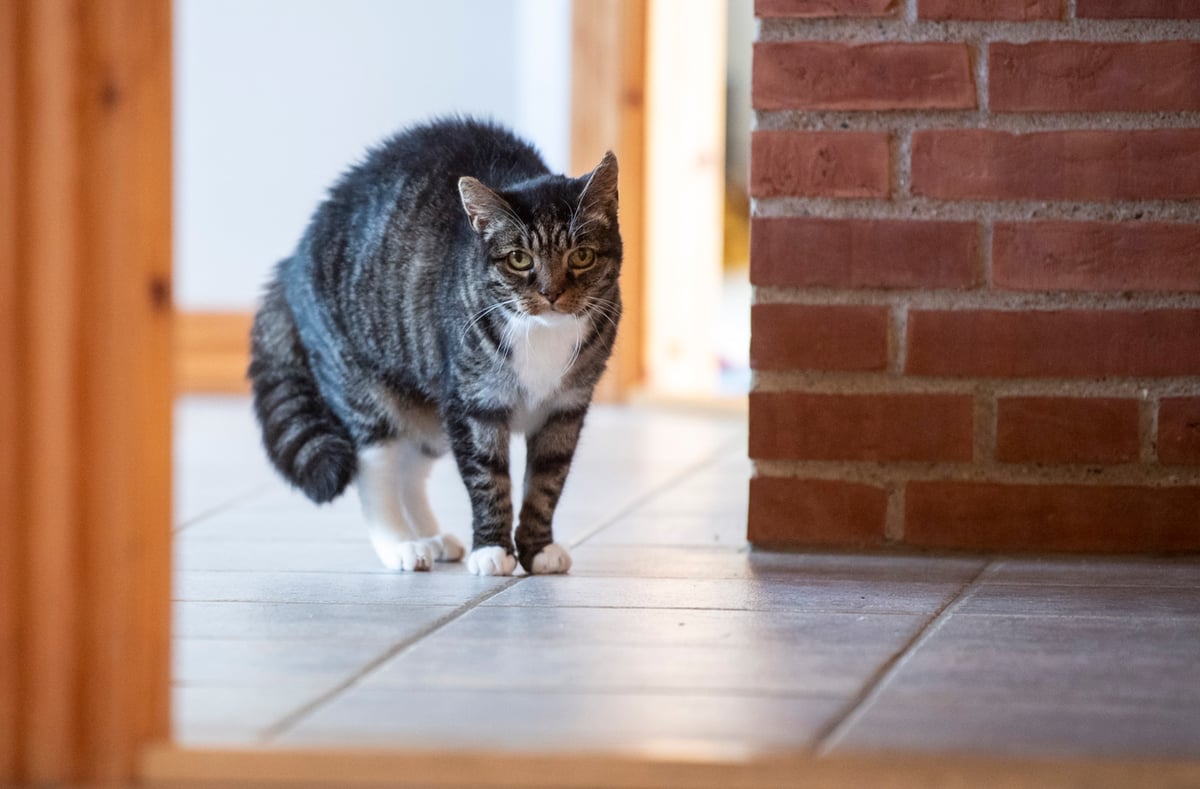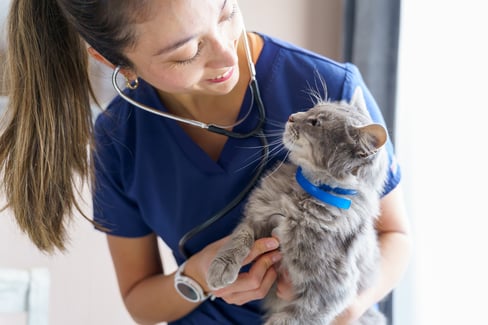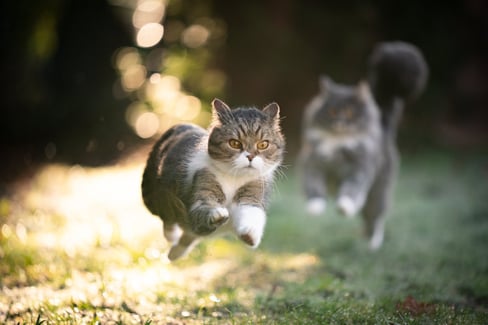Table of Contents
Some people say that a dog is a man’s best friend. While that may be true for some, cats are just as loved and accepted as other furry members of the family.
We know that cats love to run, jump, and squeeze themselves in the smallest of spaces which can be alarming when you have to retrieve your kitty from the hole in the wall by your dryer vent for the third time this week.
When your cat suddenly doesn’t seem interested in jumping or contorting its body to fit into small spaces, it might be an indication that your cat is getting old or has cat arthritis, but it could also be a sign that there’s something more serious going on, like a spinal injury.
Spinal injuries in humans are taken very seriously since damage to the spine can affect various parts of the body and result in severe health issues or even death.
The same can be said for cats, so if your feline friend is acting strange, especially after an accident that could have caused trauma to the spine, then you must seek veterinary care for them right away.
While this article isn’t a substitute for the medical diagnosis of a veterinarian, it does provide education on cat spine injuries and problems so you can be more knowledgeable in noticing the signs of your cat’s declining spine health.
Let’s start with the basics and get straight into the nitty-gritty on everything related to cat spines.
About Cat Spine Problems
Cats, just like humans, have a nervous system that is made up of two components: the central nervous system and the peripheral nervous system. The central nervous system is what we’ll focus on here since it consists of the brain and spinal cord.
If a cat is experiencing spinal problems and is in pain, it will often present in neurological symptoms due to the connection of the brain and spinal cord.
A lot of the same neurological conditions that affect humans can also affect cats in similar ways, including spinal injuries. In other words, as a result of spinal injuries, cats can:
- Become paralyzed
- Develop ataxia (uncontrolled body movements)
- Lose limb control
Your cat’s nervous system is responsible for controlling the same involuntary functions as humans, like being able to move their head and legs, to keeping internal functions of their body working properly, like their lungs taking in oxygen or their heart beating.
Cat spinal problems can be very serious since any injury to the spine can very quickly affect basic bodily functions and prevent your cat from being her normal feisty self.
If your cat has a spinal problem or you suspect that it might have a spinal problem, you should take them to the vet immediately for consultation and treatment.
Cat Spine Anatomy
To really get a feel for what causes cat spinal injury problems, it’s important to have a basic understanding of the anatomy of your cat’s spine.
To start, here is a visual diagram of cat spine anatomy:
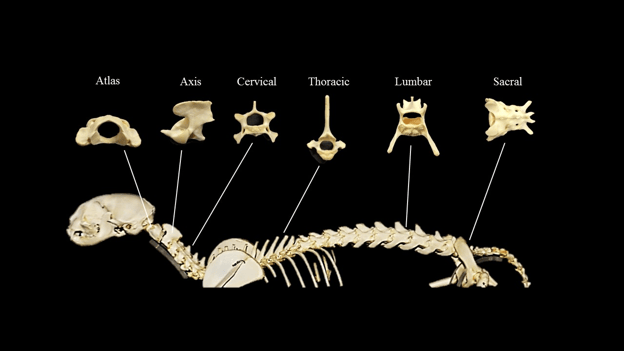
Since a cat’s brain and spinal cord are connected in one system, spinal injuries will often present with neurological symptoms either alongside or exclusively from physical symptoms.
The brain and spinal cord being one connected unit is important to remember since it can be difficult to identify a cat in pain unless you know what to look for.
The Most Common Spine Conditions for Cats?
The most common spine conditions for cats are inflammatory and infectious diseases, as well as feline infectious peritonitis (FIP) and sometimes Lymphosarcoma, which is a type of cancer.
Other cat spine problems are often caused by birth defects, such as scoliosis (curved cat spine), short spine syndrome (often referred to as Manx syndrome or some form of dysplasia), or bony spine (spondylosis deformans).
The below table gives you a brief overview of some of the most common cat back problems. Then, read on to get a more in-depth explanation of each of these conditions.
| Condition |
Overview |
Common Symptoms |
| Short Spine Syndrome Cat |
Often called Manx Syndrome because it’s more common in Manx cats, this syndrome causes the last few vertebrae of the cat to be poorly developed |
|
| Feline Infectious Peritonitis (FIP) |
Called feline coronavirus, this is a viral disease that typically affects the gastrointestinal tract of cats |
|
| Cat Scoliosis |
A disease that causes a feline’s spine to curve |
|
| Lymphosarcoma |
Cancer of the lymphocyte cells, which affect the immune system |
|
| Cat Bony Spine |
Caused by a cat’s thyroid gland becoming swollen and producing excess hormones |
|
| Cat Losing Hair Along Spine |
Can be acquired alopecia or can be caused by fleas and parasites |
|
| Cat Has Lump on Back Along Spine |
Fatty tumors which often show up along a cat’s spine |
|
Short Spine Syndrome in Cats (Manx Syndrome)
Have you ever seen a cat with a short tail? The most commonly accepted history of the short spine cat or Manx cat was that it was bred on the Isle of Man in the Irish Sea, though there are other interesting historic theories associated with this breed.
Humans have bred cats for this short tail presentation—called Manx—because of its aesthetic. However, the short tail presentation is associated with spina bifida, which can cause incontinence and painful infections.
Spina bifida is a term that is used to describe several conditions of the spine, specifically where the neural tube that forms the spinal cord fails to close or the vertebrae of the spine don’t completely form.
While some short spine cats are fine and don’t show signs of serious spinal cord problems, others are not so lucky. Due to the risks involved with Manx syndrome, it’s difficult to comment on the moral issues with continuing to breed short spine cats, but future information could at least inform pet owners on the risks involved.
If you have a cat with short spine syndrome, you may need to take more frequent trips to the vet. That way, you can make sure there are no complications developing.
Feline Infectious Peritonitis (FIP)
FIP is a type of inflammatory disease that is unique to cats, with its main symptom being severe inflammation in the body. This inflammation can cause organ failure, antibiotic-resistant fevers, and thick, yellow fluid to accumulate in the chest or abdomen.
When a cat has an abnormal reaction to regular feline coronavirus, which is quite common in cats, then FIP can develop. Typically, cats who are exposed to feline coronavirus will get mild symptoms, including gastrointestinal issues, and recover naturally. However, some cats can experience mutations of the virus in their intestines, which can enter other tissues in the body resulting in a severe reaction.
FIP is especially common in young kittens due to their undeveloped immune system, but the chance of infection increases in all cats when they are exposed to overcrowding situations or increased stress.
Since FIP is directly linked to feline coronavirus, it remains difficult to test for the distinction of one or the other.
Cat Scoliosis 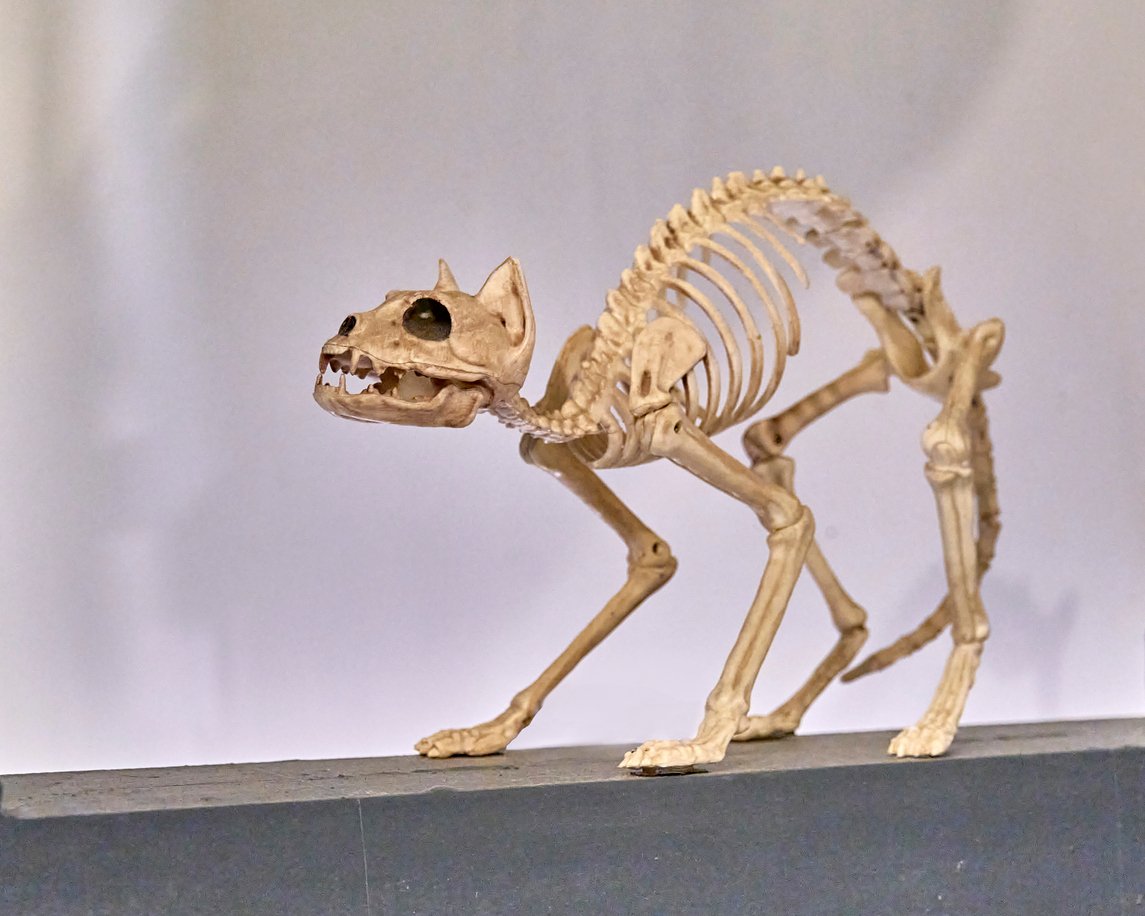
Just like humans, cats can have scoliosis in their spine. Your kitty’s spine should be straight from her head to her tail, but if it curves at all, she might have scoliosis. Of course, a vet would have to confirm this diagnosis.
Scoliosis in cats is often congenital, which means it’s a condition that’s present from birth, so you would likely know that your kitty has scoliosis from a very early age. Other times, this condition can result from trauma or disease.
Treatment for scoliosis in cats varies depending on your cat’s symptoms. Some cats are perfectly fine, and some may have minor movement issues. If your cat isn’t in pain and the condition doesn’t seem to affect them negatively, then treatment likely isn’t needed.
Of course, if your kitty develops symptoms due to her scoliosis or what you suspect might be a result of her being a cat with scoliosis, then she must be checked out by a vet.
Lymphosarcoma
Lymphosarcoma is a type of cancer that attacks the lymphocyte blood cells and lymphoid tissues in your cat’s body. This cancer can originate in many areas of the body with the spinal cord being only one of them. Lymphosarcoma may not specifically be a spinal cord disease in cats, but since it can affect the spinal cord and is common cancer, it’s worth a mention.
Cats of any age can be affected with lymphosarcoma, and they are especially susceptible if they’ve survived having the feline leukemia virus (FeLV) or if they have the feline immunodeficiency virus (FIV).
The type of Lymphosarcoma that a cat is diagnosed with depends on the site of the cancer. If the cat has this disease in their spine, then it will likely exhibit cat spine injury symptoms, such as weakness, pain, reduced appetite, and more.
Cat Bony Spine
Have you ever felt your cat’s spine and noticed that it’s quite prominent? While being able to feel some of her spine is normal, and can even indicate whether your cat is overweight or underweight, spinal disorders can cause your kitty’s spine to feel strange.
Spondylosis deformans (the scientific term for cat bony spine), is one of many cat back problems and could be one reason why your feline friend’s spine seems to be protruding more than usual.
Spondylosis deformans is a condition that affects the spine's vertebral bones and is identified by bony spurs or osteophytes along the edges of the bones. In some cases, these bony spurs can become large enough to seemingly form a bridge between vertebral bones, which is why you may be able to feel more pronounced areas on your cat’s spine.
This condition often develops in cats as a result of ageing, and is common in cats 10 years of age and older. There’s no specific breed of cat where this condition is more common, and typically felines with spondylosis deformans are free of symptoms.
Remember, in an older cat bony spine issues may be more common. This may require additional care on your part to prevent pain and discomfort.
Cat Losing Hair Along Spine
Sometimes, you may notice your feline is losing hair along its spine. This is often referred to as cat pattern baldness or cat alopecia. This type of pattern baldness was once thought to be a condition in and of itself, but today, it’s thought to be due to other underlying conditions.
A couple of the conditions that can cause cat scabs along the spine or cat alopecia include:
- Fleas and parasites
- Allergies
- Skin infections
- Hormonal imbalances
In most cases, this pattern of baldness will be paired with itchy, scaly skin. The good news is that it’s usually easily treated and just requires a quick trip to the vet to get your cat back to feeling his best.
Cat Has Lump On Back Near Spine
Lumps along your cat’s spine are often referred to as fibrosarcoma. These lumps are usually just underneath the cat’s skin and are most commonly found along the cat’s spine or neck.
The lumps are usually irregularly shaped and can be either soft or firm to the touch. In most cases, if you feel your kitty’s lumps, it won’t cause them any kind of pain or discomfort.
Fatty tumors usually cause these lumps. However, they can also be caused by bites from fleas or from cancerous tumors. Because these can have some nasty consequences, getting lumps on your cat’s spine checked out by the vet is always best.
Common Cat Spine Injury Causes
Sometimes it can be obvious to check for cat spine injuries, like if your poor kitty is hit by a car or falls from a great height, but other times spinal injuries can be caused by diseases and infections.
The most common causes of cat spine injuries are:
- Trauma
- Inflammation of the fluid surrounding the brain and spinal cord
- Bacterial infection
- Blocked blood vessels
- Genetic conditions
- Tumours
Even if the cause of the injury is obvious, your vet will likely want to perform an x-ray or scan of your cat’s spine to determine the level of injury.
Symptoms of a Cat Spine Injury
Since the brain and the spinal cord are directly linked to the central nervous system, it makes sense that when your cat has a spine injury, it will likely exhibit neurological symptoms.
Neurological symptoms indicating a cat spine injury often include:
- Weakness
- Severe pain, which can often be recognized by excessive meowing or crying
- Behavioural changes, like increased aggression or intentionally avoiding you
- Abnormal posture
- Muscle spasms
- Tense or stiff muscles
- Inability to use the litter box properly — urinary and fecal incontinence
- Reduced appetite
- Complete or partial paralysis
- Hunched posture or abnormal posture
- Ataxia (uncontrollable body movements)
If you notice your cat showing any of these nasty symptoms, a trip to the vet is definitely in order. That way, you can get your kitty checked and out and ensure nothing serious is going on.
Maintaining Cat Spine Health
Cat spine health can be affected by several factors, including congenital disorders, disease, trauma causing damage to the spine, and ageing. Since we often don’t have control over most of these factors, it can seem like there’s nothing we can do about taking measures to protect and maintain our cat’s spinal health.
However, there actually is a way to be proactive about your cat’s health. While the supplements we’ll discuss are not specifically for your cat’s spine, they help prevent other diseases or disorders that could potentially lead to spinal problems for your cat.
Let’s review some of these supplements and why they’re so critical to maintaining cat spine health.
Cat Joint Supplements
A cat spine consists of effective vertebrae that are effectively joints, so it makes sense to incorporate joint supplements into your cat’s diet to maintain spinal health alongside the health of your cat’s other joints.
Using glucosamine for cats is an important consideration, as their often daredevil running and jumping means their joints are being put to work. Glucosamine is a naturally occurring substance in allanimals, including cats, dogs, humans, horses, and more, and works to repair the cartilage and synovial fluid in our joints.
As cats age, like humans, the body’s natural production of glucosamine lessens, which can lead to joint pain and stiffness.
To ease joint pain, there are two products that you can consider:
- TRI-ACTA for Pets (ideal for younger cats)
- TRI-ACTA H.A. for Pets (ideal for older and senior cats)
So what’s the difference between these two products?
Both powdered products are easy to add to your cat’s regular food. They both contain high-quality glucosamine, chondroitin, and MSM as a preventative and restorative method of maintaining your cat’s joint health.
However, TRI-ACTA H.A. for Pets includes hyaluronic acid, which aids in keeping your cat’s ageing connective tissues well lubricated and moist. This supplement is typically given to older cats who show signs of reduced mobility or have mobility issues after receiving surgery or other medical procedures. TRI-ACTA Regular Strength is given to younger cats as a preventative or when there are mild to moderate mobility concerns.
TRI-ACTA for Pets
A proactive approach for developing and younger adult pets to maintain optimal joint health mobility, minimize inflammation and fend off age-related ailments.
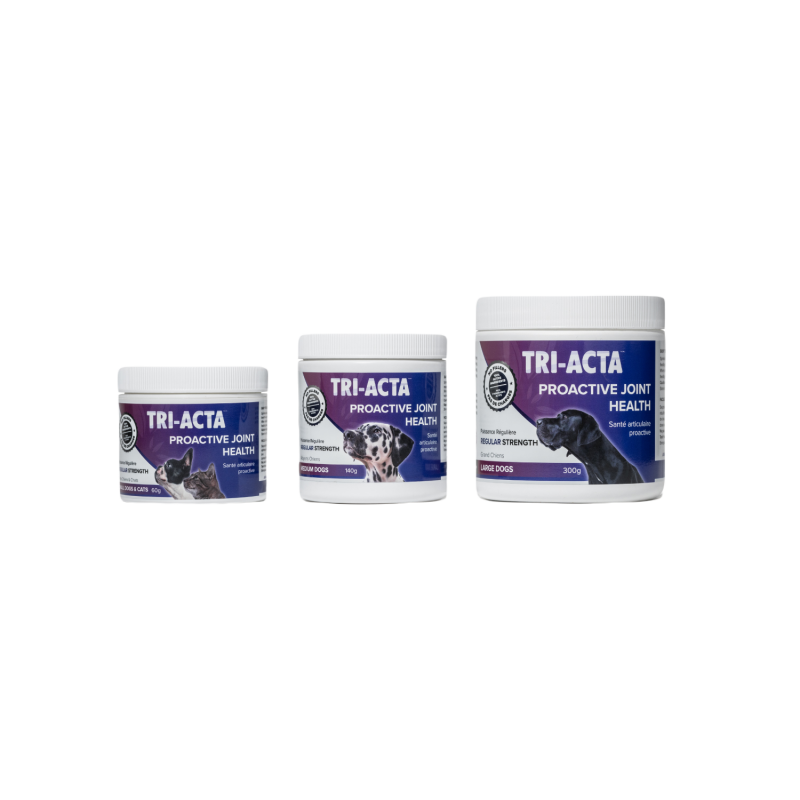
Cat Spine Treatment Options
While it can be scary if your cat develops a spinal injury, cat spine injuries can often be treated with medications, surgery, and physical therapy.
The type of treatment that your cat receives for its spinal injury will vary depending on its severity. Typically, your vet will investigate the injury by performing a physical and using information gleaned from an X-ray or CT scan.
Once your vet has determined the type and severity of the cat spine injury, they will recommend a course of treatment. Let’s take a look at a couple of the different cat spinal treatment options your vet may recommend.
X-Ray
An X-ray, or a cat scan spine, is often the first treatment option for cat spine injuries. With this cat spine treatment, veterinarians check out your cat’s back to see what might be going on and to identify if the issue has to do with the cat’s bones or whether it’s muscular.
X-ray results are typically delivered right away, so you won’t have to wait around to determine the next steps. Depending on the x-ray, your vet may prescribe anti-inflammatories, specific medication, physical therapy, or even supplements to help loosen your cat’s joints.
Surgery
Surgery is typically only required for more severe cat backbone injuries. These are invasive procedures in which your cat will be under general anesthetic. Depending on how his recovery goes, he may be required to stay overnight in the hospital after his surgery.
Spinal surgeries in cats are called facetectomies and require cats to wear a full-body suit in recovery. This helps prevent them from scratching their cat backbone during recovery, which can cause loose stitches, infection, and other complications.
Rehabilitation
Rehabilitation therapy is another option for cats struggling with spinal injuries. There are a number of different types of rehabilitation that your vet may prescribe, including:
- Hydrotherapy
- Cold laser therapy
- Exercise
Remember, it’s important to consult a vet to see which type of therapy is appropriate for your cat. That way, you can help your cat recover as fast as possible.
Acupuncture
One final type of cat spine treatment your vet may prescribe is acupuncture. Acupuncture involves inserting long, thin needles into specific pressure points on your cat’s body to help alleviate pain.
Acupuncture isn’t just limited to helping cats with spine injuries. It can also support other issues, such as liver problems, cat paw injuries, or other pain your pet may be dealing with.
Joint Supplements
While a cat’s spine isn’t exactly the same as the joints in its legs, your cat’s spine health can still be improved by giving them joint supplements. Cat joint supplements like TRI-ACTA H.A. contain ingredients like glucosamine and chondroitin, which helps strengthen and repair the cartilage in between the vertebrae in your cat’s spine that cushions the bones and helps absorb impact. MSM provides natural pain relief, and the inclusion of hyaluronic acid in TRI-ACTA H.A. provides more lubrication for the spinal structures, which assists with healing and reduces pain.
TRI-ACTA H.A. for Pets
Our maximum strength formula is optimally designed to accelerate the formation of cartilage, minimize inflammation, expedite the healing process, and improve joint conditions.

Cat Spine Q&A 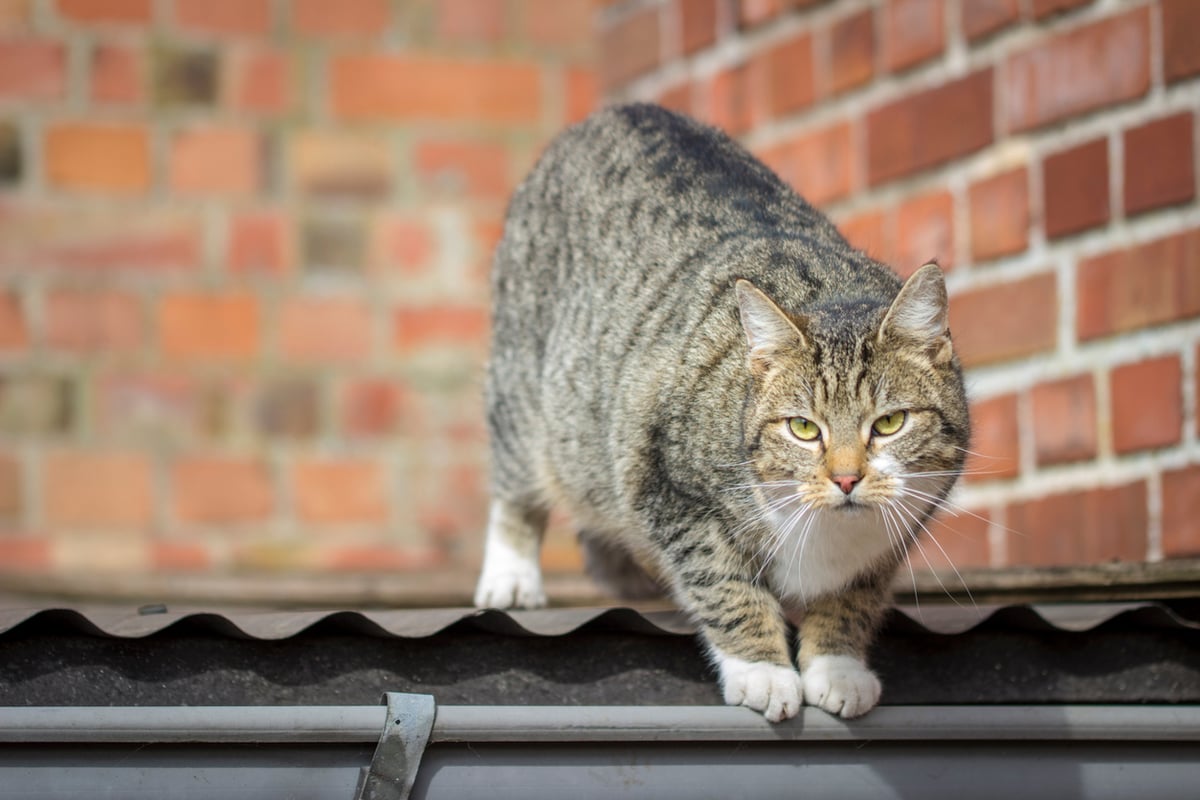
Look, cat spine facts and spinal health can be complicated. If you’ve read this far, then chances are you still have some questions. Let’s take a look at some common questions (with answers) related to the feline spine.
Why is my cat's hair standing up on spine?
Your cat’s fur stands up on its spine due to stress. The condition, which is called piloerection, happens when hormones in the cat’s body cause muscles at the bottom of each hair follicle to contract. This lifts your cat’s fur away from its body and causes it to have a standing-up appearance.
How many vertebrae does a cat spine have?
Cat spines have 52 or 53 vertebrae, while humans have 32 to 34. The extra bones in a cat spine are spaced out and have more padding when compared to a human, aiding in a cat’s flexibility and the ability to turn, twist, or spring into the air. This is part of the reason why a cat is so much more flexible than a human, but the rest of the cat’s bones also play a huge role in their litheness.
My cat flinches when I pet her spine
If your cat flinches when you pet her spine, it could be due to hyperesthesia, which is extreme sensitivity in a specific area of your feline’s body. Alternatively, it could be due to pain in that area. It’s best to have a vet check your kitty out to ensure nothing more sinister is going on here.
Why are cats' spines so flexible?
The bones in your cat’s spine have elastic cushioning discs between each vertebra. These discs allow for additional flexibility, so cats can rotate up to 180 degrees to each side.
Are cats spines strong?
Cats' spines aren’t necessarily strong. However, they are extremely flexible. They can move their bodies more than most other animals, largely thanks to the increased number of vertebrates they have and the cushioning discs in between each one.
Conclusion
A cat spine is a complex series of bones that give human spines a run for their money regarding flexibility and movement ability. And just like humans, cats can suffer from diseases and disorders that affect the spine, with many of them being diseases and disorders that also affect humans.
Thankfully for our feline friends, there’s a great deal of information available about cat spine anatomy and the various afflictions that can affect cat bones in general, so we’re well-prepped to be able to help our cats with spinal issues live long, fulfilling lives.
Nobody likes to see their cat suffer from spinal issues. Help prevent cat spine issues in your feline friend from kittenhood to adulthood with specially-formulated supplements that are designed to support your cat’s joint health.
Try TRI-ACTA H.A. for Pets today for your senior cat or TRI-ACTA for Pets for your younger kitty.
TRI-ACTA H.A. for Pets
Our maximum strength formula is optimally designed to accelerate the formation of cartilage, minimize inflammation, expedite the healing process, and improve joint conditions.

Newsletter Signup
Subscribe to our newsletter to receive the latest news and exclusive offers.
.jpg?height=2000&name=Cliick_Integricare-DISPLAY-REVISEDV2%20(1).jpg)
Proactive & Therapeutic Joint Supplements
When given daily, Integricare joint supplements recover bone and joint injuries faster and help prevent mobility injuries from happening in the first place.

